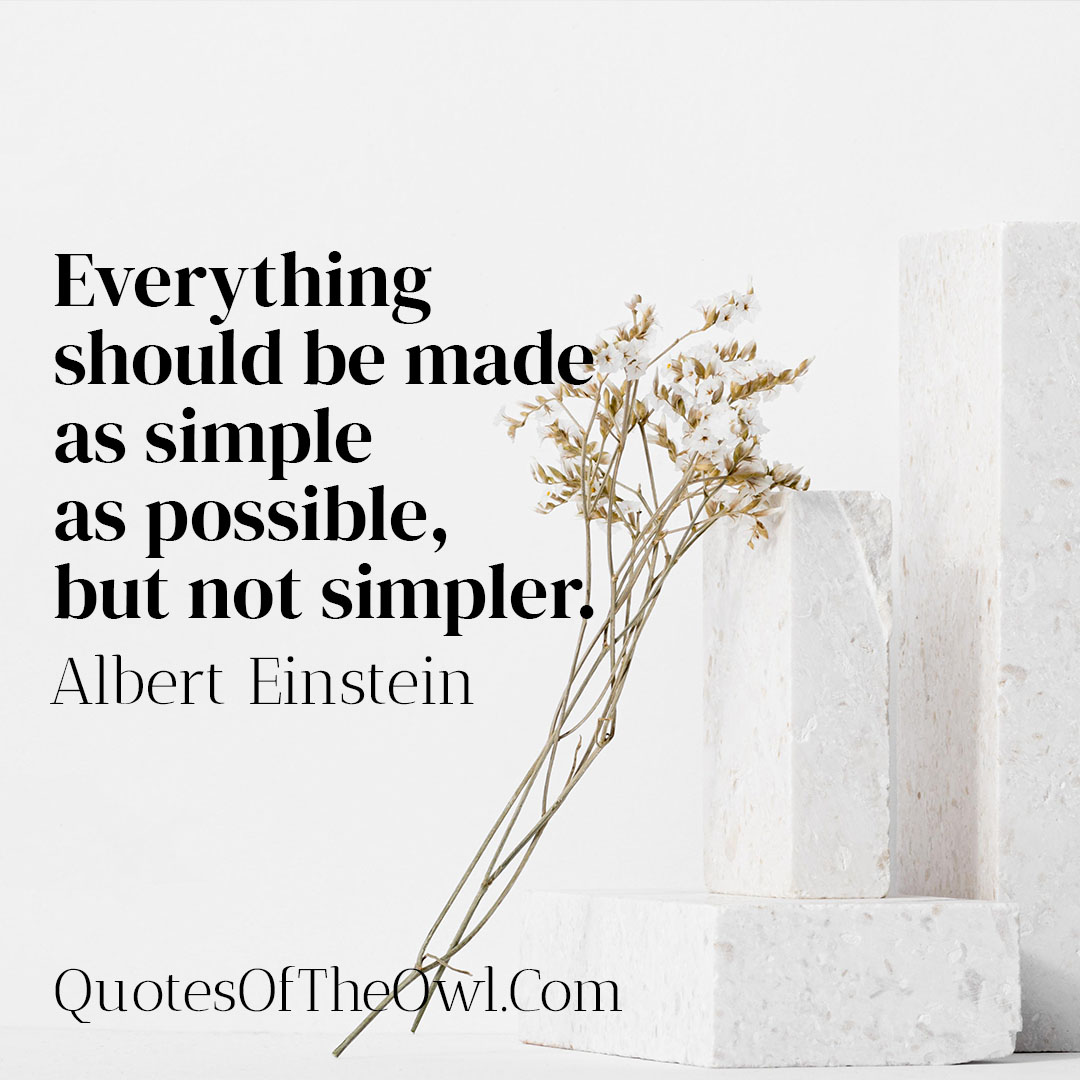Everything Should be Made as Simple as Possible, But Not Simpler: Understanding Albert Einstein’s Famous Quote
Albert Einstein was a theoretical physicist and philosopher who is widely regarded as one of the most brilliant minds in human history. Among his many famous quotes, one stands out: “Everything should be made as simple as possible, but not simpler.” In this article, we will explore the meaning behind this quote and how it can be applied to our everyday lives.
What Does the Quote Mean?
At its core, Einstein’s quote is a call for simplicity. He believed that the best solutions to complex problems are often the simplest ones. However, he also recognized that there is a limit to how simple things can be without losing their effectiveness. In other words, we should strive for simplicity, but not at the expense of accuracy or usefulness.
The Importance of Simplicity
Simplicity is an essential component of effective communication, problem-solving, and decision-making. When things are too complicated, they become difficult to understand and implement, leading to confusion and frustration. On the other hand, when things are simplified, they become more accessible and easier to use.
Avoiding Oversimplification
While simplicity is critical, oversimplification can be just as harmful. When things are made too simple, they can lose important details, nuance, and context. This can lead to incomplete or inaccurate information and flawed decision-making. It is essential to strike a balance between simplicity and complexity.
Applying Einstein’s Quote to Everyday Life
Einstein’s quote can be applied to many aspects of our lives. For example, in communication, we should strive to convey our message clearly and concisely, using simple language and avoiding unnecessary jargon. In problem-solving, we should look for the most straightforward solutions that address the root cause of the problem. In decision-making, we should consider all the relevant factors but focus on the most critical ones.
Examples of the Quote in Action
Let’s look at a few examples of how the quote can be applied in real-life situations:
Example 1: Product Design
A product designer is tasked with creating a new phone app. They could create a complex app with many features, but that may overwhelm users and make it challenging to use. Alternatively, they could simplify the app’s design, focusing only on the most critical features, making it easy for users to navigate.
Example 2: Writing a Resume
When writing a resume, job seekers may be tempted to include every detail of their work history. However, that may result in a long and confusing document. Instead, they should focus on their most relevant experience and highlight their key skills and accomplishments.
Example 3: Communication
In a business meeting, a presenter may be tempted to use complex jargon to impress their audience. However, that may lead to confusion and disengagement. Instead, they should use simple language and clear examples to convey their message effectively.
Conclusion
In conclusion, Einstein’s quote reminds us of the importance of simplicity in our lives. It encourages us to strive for simplicity in our communication, problem-solving, and decision-making. However, it also reminds us to avoid oversimplification and find the right balance between simplicity and complexity. By applying this principle to our everyday lives, we can achieve greater clarity, understanding, and effectiveness.
Check out our collection of Albert Einstein quotes for further inspiration and insights.

